by Steven Brint and Komi T. German
In this essay, we address the consequences of the University of California’s policies to address racial disparities and its support for social justice activism as influences on its commitment to academic freedom and other intellectual values. This is a story of the interaction between two essential public university missions – one civic, the other intellectual – and the slow effacement of one by the other. The University’s expressed commitments to academic freedom and the culture of rationalism have not been abandoned, but they are too often considered secondary or irrelevant when confronted by new administrative dictates and social movement activism related to diversity, equity, and inclusion (DEI). Many of UC’s DEI policies have proven to be valuable means to guarantee access and to improve equality of opportunity and are compatible with the intellectual mission of the University; others, we will argue, represent threats to a climate supportive of academic freedom and the University’s intellectual mission. These policies have also served as a shield and support for more direct and far-reaching attacks on the foundations of the University’s intellectual mission by radical critics who are convinced of its complicity in racial injustice and other societal sins.[1]
The use of mandatory DEI statements as initial screening mechanisms in faculty hiring is the most dramatic of the new administrative policies. This policy can be considered the culmination of a series of efforts that the ten UC campuses have taken for more than a decade in response to legislative and UC Office of the President pressures to place representation at an equal or higher priority than academic qualifications.
In 2018, candidates for academic positions at UCLA were the first to be required to submit diversity statements. By 2019, eight of the ten UC campuses mandated that ladder rank faculty recruitments require candidates to submit diversity statements. These statements ask candidates to discuss what they have contributed to the University’s goals of diversity, equity, and inclusion. The rubric used by the UCs to evaluate diversity statements under the Advancing Faculty Diversity Initiative delineates criteria for scores ranging from 1 (“poor”) to 5 (“excellent”). An applicant who “doesn’t discuss gender or race/ethnicity” should receive a “poor” score, as should an applicant who sees DEI as “antithetical to academic freedom or the university’s research mission.” By contrast, an applicant who discusses DEI as “core values that every faculty member should actively contribute to advancing” should receive an “excellent” score.
It is the naïve candidate who simply discusses his or her efforts to encourage and recruit students or faculty members of color. These efforts are considered minimal. As UC Merced sociologist Tanya Golash-Boza counseled applicants in the pages of Inside Higher Ed, do not worry about coming across as “too political,” because such fears might lead them to write a “blasé statement.” Instead, she recommends that they demonstrate their “awareness of how systemic inequalities affect students’ ability to excel” and their commitment to “activism.” She encourages applicants to “tell your story”—that is, to point out the obstacles they have faced, or, alternatively, to “acknowledge your privilege.” She also recommends that applicants focus on “racial oppression, sexism, homophobia, transphobia, ableism, or some other commonly recognized form of oppression.” When it comes to teaching, she encourages applicants to express their commitment to “antiracist pedagogy” (Golash-Boza 2016).
In 2018, the University began to experiment with the use of diversity statements as the initial screening device in faculty searches, and to require faculty members on search committees to ignore the institutions from which candidates received their doctorates. Excellent scholars from less prestigious institutions, so the University argued, were being ignored because of the bias in favor of prestigious pedigrees. In a presentation prepared by the UC Davis vice provost for academic affairs search committee members were instructed to review a candidate’s “Contributions to Diversity” statement before any other part of an application, and that candidates who do not “look outstanding with regard to their contributions to diversity” would not advance for further consideration in the hiring process. Reiterating this message, the vice chancellor explained at a conference that “in these searches, it is the candidate’s diversity statement that is considered first; only those who submit persuasive and inspiring statements can advance for complete consideration.” The vice chancellor emphasized that this change is a “game changer” (Ortner, 2020).
UC Berkeley has published information about the effects of the policy mandating the use of diversity statements as an initial screening device. In one faculty search, less than one quarter of otherwise qualified candidates had submitted diversity statements that were sufficient for advancement to the next hiring stage. The files for these 214 candidates were then sent to the appropriate departmental search committees to create a short list for interviews (these are typically 3-6 candidates per job). During their job talks and interviews, candidates were asked to explain their ideas about diversity, and their responses determined whether they were eligible to be hired in this late stage. Thus, at every stage of the hiring process, candidates were eliminated because they were perceived as being insufficiently committed to DEI, regardless of their academic qualifications. The race and gender characteristics of the applicant pool in the UC Berkeley search changed substantially after candidates were evaluated on the basis of their diversity statements. The representation of women increased from 42 percent of applicants to 64 percent of the finalists, whereas the representation of men decreased from 57 percent of applicants to 36 percent of the finalists. The representation of African Americans increased from 3 percent of applicants to 9 percent of the finalists; and the representation of Hispanics increased from 13 percent of applicants to 59 percent of the finalists. By contrast, the representation of Asian Americans dropped from 26 percent of applicants to 18 percent of the finalists, and the representation of whites decreased from 54 percent of applicants to 14 percent of the finalists.
Unlike First Amendment guarantees, academic freedom does not give free rein to uninformed opinions. It supports only speech based on professional expertise, and, as such, it is the lynchpin around which professors’ freedom of inquiry revolves. The policy of winnowing applicant pools based on diversity statements poses an obvious threat to the climate for academic freedom because of the implicit and explicit expectation that faculty must express a specific view regarding DEI. It is highly plausible that candidates will be (and arguably already have been) discriminated against not only because they do not subscribe to a particular set of political beliefs (as indicated by the UC scoring rubric criteria for “excellent” versus “poor” scores), but also because they do not fit a specific demographic profile (as suggested by the drastically different gender and racial-ethnic compositions of the finalists as compared with the initial pool of candidates in UC Berkeley’s search).
UC’s Diversity, Equity and Inclusion Policies
How did it come to this? UC efforts to diversify the student body and the faculty have been prominent in the University of California since the late 1960s when black and Latino faculty members demonstrated for ethnic studies programs, multicultural organizations, and minority hiring commitments. These developments were briefly interrupted by the passage of Proposition 209 in the mid-1990s which banned affirmative action in hiring or admissions. Following the passage of Proposition 209, the top universities in the UC system lost African American and Hispanic students, but the others continued to diversify. At first, efforts to diversify hiring took the familiar form of broader advertising and more active recruitment, with special emphasis on the University’s commitments to equal opportunity.
These efforts proved insufficient to change the composition of the student body or the faculty, especially at the flagship campuses at Berkeley and Los Angeles. Today Latino undergraduates continue to be under-represented at seven of the nine UC campuses and black students remain under-represented at all nine. Asian students are substantially over-represented at all campuses except UC Merced (Urban Institute 2020), and international students represent about 15% of the total (UCOP 2020). For a public university intended to serve all families in the state this is indeed a discomfiting picture, and it is complicated by the lower average GPAs and significantly lower test scores of under-represented students of color. The distributional disparities are much greater still for University of California faculty members. Only about three percent are black and only about seven percent Latino, while whites comprise some two-thirds of the ladder faculty and Asians about one-quarter (UCOP 2020). Motivated by constituent pressure and these dispiriting numbers, legislators demanded more energetic efforts to bring the University into alignment with the composition of the state’s population; university administrators have had incentives, both personal and institutional, to comply.
Beginning in 2010, UC undertook a number of new policy initiatives to expand the numbers and opportunities for under-represented students and faculty and to protect them from mistreatment at the hands of groups perceived to be dominant on campus. The first of these was the “intolerance report form,” adopted in 2010. Through the form, the University invites employees to submit a report if they “experience or observe behavior that is inconsistent with our Principles of Community” (UCOP’s weekly e-newsletter, 2010). The goal of the intolerance report form is to create “a campus and a world free of discrimination, intolerance and hate,” while remaining “equally committed to freedom of expression, critical inquiry, civil dialogue and mutual respect.” The Office of the President does not explain how any potential conflicts between these goals are to be resolved. If one feels discriminated against, does one have the right to prevent someone else’s freedom of expression? What are the criteria for determining that dialogue is civil versus discriminatory, intolerant, and hateful? Subjective interpretations of bias may make these questions difficult to answer and, given the emphasis on intolerance, lead to institutional sanctions for a wide range of protected expression.
The number and disposition of incidents filed based on the reports is unknown because UC has failed to disclose incidents or how they have been handled. In response to a public records request in 2016, the University provided statistics from the 211 reports filed between September 2010 and January 2012, but without indication of actions taken. One subsequent case became a miniature cause celebre and indicates the fury that is often directed at perceived violations. In 2015, UCSD’s student-run satirical newspaper, The Koala, published a piece, “UCSD Unveils New Dangerous Space on Campus,” that mocked safe spaces. Shortly after the article’s publication, UCSD administrators denounced The Koala, describing it as “profoundly repugnant, repulsive, attacking, and cruel.” The university administration then summoned all members of the academic community to “join us in condemning the publication and other hurtful acts” (UC San Diego News Center, 2015). The ACLU, which represented the student newspaper, described numerous intolerance reports of the period demanding that The Koala be banned from campus (ACLU San Diego 2016).
In 2012, UCLA chancellor Gene Block requested a review of UCLA anti-discrimination policies following the complaint of a black UCLA medical school professor of gross and abusive discriminatory treatment in his unit. The requested report, led by former California Supreme Court justice Carlos Moreno, sharply criticized UCLA’s mechanisms for reporting and responding to complaints about racially hostile and discriminatory acts.[2] In December 2013 then UC President Janet Napolitano appointed a joint Academic Senate-Administrative committee to submit recommendations for UC-wide responses to the Moreno Report. The following month Napolitano instructed each of the campus chancellors to implement five immediate changes to improve campus climates for racial-ethnic minorities, including new offices, continuing advocacy for DEI policies, and regular reporting of the number and type of complaints. Then California Attorney General Kamala Harris subsequently met with UCLA Chancellor Block in summer 2014 with a list of 14 actionable commitments to address campus climate issues for minority faculty members, staff, and students, which Block accepted. These commitments included mandatory training and the appointment of a vice chancellor for diversity, equity and inclusion with a budget of $3 million.[3] UC DEI initiatives accelerated following these events.
After three years of debate and two rounds of system-wide Senate review, the UC Academic Personnel Manual was revised in 2015 to state: “contributions in all areas of faculty achievement that promote equal opportunity and diversity should be given due recognition in the academic personnel process, and they should be evaluated and credited in the same way as other faculty achievements.” According to the Office of the President, the goal was not to create a “fourth leg” of evaluation, separate from research, teaching, and service but rather to show that these contributions are inseparable from how the University conceives of merit (UCOP 2015). At present, there is no publicly available information regarding how this revision has affected the University’s merit review process.
In the summer of 2019, the University added equity advisors to every program on eight of its campuses. The equity advisor is “a senior ladder faculty member who participates in the faculty recruitment process by raising awareness of best practices…. Their role is to help advance diversity and to ensure that a climate of inclusion and equity is maintained throughout the search process” (UCOP 2019). Some Equity Advisor programs have expanded their purview to include other areas, such as faculty advancement and retention, salary equity decisions, formal and informal mentoring of faculty, advancing diversity in graduate admissions, and department climate. They “organize faculty development programs, address individual issues raised by women and underrepresented minority faculty, and serve as a resource in division for faculty members seeking more information about equity, inclusion, diversity, and broadening participation in higher education” (ibid.). In cases of conflict between students and faculty members, equity advisors are empowered to mediate with the goal of improving the climate for minorities and women. People can report, among other things, “expressions of bias,” “hate speech,” “bias incidents,” and a “hostile climate.” It is too early to say how equity advisors will respond to incidents that involve both principles of academic freedom and equity concerns – surely there will be variation – but it is perhaps indicative of the University’s stance that no academic freedom advisors are on the payroll.[4]
In 2020, in another concrete step to expand racial-ethnic (and socio-economic) diversity, UC eliminated the SAT as a requirement for admission, a step taken against the recommendation of an Academic Senate Task Force. This decision was clearly influenced by then-UC President Janet Napolitano’s assessment that the Regents were determined to eliminate the SAT: “A core group of (UC) Regents, long versed in UC’s difficulties in expanding the enrollment of Chicano/Latinos and African Americans at the flagship campuses, viewed the SAT as a major political obstacle and favored its elimination. The leading opponents of the SAT on the University’s governing Board of Regents are well known advocates of increasing access to the university for students of color and during the public discussion period…a few Regents stated that the SAT was ‘racist’” (Douglass 2020: 13).
Campus administrators argue that diversity and scholarly excellence go hand in hand, and very often they do. The landmark U.S. Supreme Court case, Gutter v. Bollinger (2003), ruled that institutions of higher education have a compelling interest in achieving a diverse student body to enhance learning for all students. This decision was influenced by a compilation of research on the educational benefits of racial diversity (Gurin 1999). Others have argued that learning environments of diverse peers can improve inter-racial relations and mutual understanding; the much of the existing evidence provides support for that argument (see, e.g., Astone & Nunez-Wormack, 1990; Tierney, 1993). Racial diversity in higher education may be particularly important to the civic mission of the university, as it is associated with greater participation in community service (Bowen & Bok, 1998; Gurin, 1999), and higher levels of civic mindedness, cultural awareness, and commitment to improving racial relations among students (Milem, 1994). Most important, UC’s commitment to diversity has brought a tremendous amount of new talent and ambition into the University.
Mutual support between the representational and intellectual missions of the University has thus been the aspiration of policy makers over the last decade, as the phrase inviting UC campuses to strive for “diversity and excellence” expresses so clearly. But the balance is changing. Academic freedom was sacrificed for the representational mission when an accounting professor at UCLA was placed on academic leave for denying students’ demands for a “no-harm” final exam following the death of George Floyd (Flaherty, 2020). It was violated when a political science professor at UCLA was subjected to a review by the University’s Discrimination Prevention Office for presenting Martin Luther King Jr.’s “Letter from a Birmingham Jail” and clips from a documentary on racism, both of which included the “N-word” (Korn, 2020). It was compromised when UC Berkeley faculty and students were advised not to use the phrase “America is a melting pot” or a “land of opportunity” (Volokh 2015). And the climate for academic freedom became chillier when a professor of history at Berkeley wrote an open letter to colleagues expressing concern about the “racial injustice” and “institutional racism” narratives of the anti-racism movement and the Berkeley’s history department responded by issuing a statement that it “condemn[s] this letter: it goes against our values as a department and our commitment to equity and inclusion” (Grimes, 2020).
Unlike these examples, most of the changes in the day-to-day affairs of the University have not reached the media; they have been incremental, including administrative appointments vetted for adherence to the University’s DEI values; the labeling of DEI statements in department meetings as “helpful” and academic freedom statements as “defensive”; and the institution of “voluntary” listening and diversity training sessions in which the loyalty of those absent becomes questionable in the eyes of attendees. These incremental changes eventually lead to qualitative shifts. In 2020, we heard for the first time a new motto, not “Diversity and Excellence,” but “Diversity is Excellence.”
Even as they have tipped the balance from the intellectual mission of the University, DEI initiatives have also provided shelter and legitimacy for social-justice activists who have mounted direct attacks on the University’s culture of rationalism. These faculty members and students are highly critical of the outcomes of administrative reforms and desire a much more fundamental transformation of the University into an instrument of progressive politics. Yet they could not have grown as strong as they have without the uncritical support of DEI-focused administrators. Thus, the two movements – the administrative movement to expand DEI policies and the activist challenge – are intertwined despite their divergent aims and methods.
The Anti-Racism Movement, Academic Freedom, and the Culture of Rationalism
Social mobilization on university campuses is cyclical, with the 1960s being the last period of intense social mobilization before our own era. The sixties began with the free-speech movement, theorization of new forms of democratic participation, and opposition to the university’s complicity in the War in Vietnam. Impatience grew with the size of the movement, following similar patterns that we see today: an upsurge of anger against injustice, refusals to conform to institutional rules, the hurling of insults at “complicit” professors, and (now off campus due to the COVID pandemic) episodes of intense marching, chanting, and occasional rock throwing at police. In the 1960s, all of this ended shortly after young men were no longer drafted to fight in Indochina.
It is possible that today’s attacks on the culture of rationalism will follow a similar pattern. Yet several features of the current situation suggest the possibility of a different trajectory. The difference between the two eras is due in part to the permeation of power-centered epistemological assumptions deeply into the arts, humanities, and social sciences. The engagé philosophers of the 1960s and 1970s – figures such as Jacques Derrida, Michel Foucault, Richard Rorty, and later Judith Butler – argued that truth was not discovered through the canons of rational discourse but was instead a feature of the hegemony of the powerful. These views were adapted and focused on race relations by critical race theorists such as Derrick Bell, Kimberle Crenshaw, and Richard Delgado. By recognizing power as a determining force, the new epistemologies were inclined to see the university’s pretensions to rational discourse as a mere sideshow or, worse, as imbued with assumptions of the powers of the age.
The new epistemologies achieved a prominent position by the end of the 1980s. In 1989, for example, the heads of six nationally prominent humanities centers wrote, “As the most powerful modern philosophies and theories have been demonstrating, claims of disinterest, objectivity, and universality are not to be trusted” (ACLS 1989, 56). Claims to objectivity, they argued, were usually no more than disguised forms of power seeking. Since that time, the critique of the culture of rationalism has never ceased to be a prevalent position in the humanities and the more interpretive branches of the social sciences. The outlook is captured in a faculty interview one of us (Komi German) conducted:
“Grad school in the ‘90s meant that if you were in the humanities, you studied postmodernism, and postmodernism itself calls so many things about knowledge, epistemology itself, objectivism, meta-narratives into question. That has created a whole class of academics, myself included, that question epistemology through their work and so that necessarily means that your work is politicized. So that’s what I do, and I believe in that… But I do understand how some professors operate – and some drive me fucking nuts because they refuse to take a stand on things because somehow that’s going to preserve their ‘objectivity’ and make them more ‘scientific.’ I understand that approach and I appreciate it, but it’s flawed because objectivity I don’t think really exists. There are systems like math that seemingly exist outside of subjectivity and human knowledge, but of course the way that you do the math and the things that you do math for, it’s not (objective) …. (T)he academy itself is invested in certain types of production because of power.”
The anti-racist movement has been gaining momentum only since 2015, following the founding of the Black Lives Matter movement, but it has provided the energy that the engagé philosophers and their followers could not. The current generation of activists has new rhetorical tools, new demands, and new media to work with. Most importantly, it has a much larger following on campus, including especially among younger faculty members (Park and Denson 2009). Those who are actively supportive of the anti-racism movement constitute a sizable portion of university arts, humanities, and social science faculties, as many as one-quarter to one-third of the whole.[5] These colleagues are well organized and vocal, and they have the attention of UC administrators who are worried about not doing enough to solve problems of racial inequities.
Academic rationalists experience difficulty in addressing the anti-racism movement critically because the movement is based on a valid, if tendentious, understanding of American racial history. The difficulty is heightened because those who are sympathetic are sensitized to any apparent failures to appreciate the role that racism has played in American history. It is true that structural racism has been instrumental in keeping many blacks in poverty and in the lower rungs of the working class. Blacks have been and still are subject to discriminatory policies in housing (Rothstein, 2017), job opportunities (Pager & Shepherd 2008), and of course policing (Weitzer & Tuch, 2006). These policies are directly implicated in the poorer health, lower life expectancy, higher levels of economic distress, and the range of social problems that are associated with poverty and economic insecurity. Many scholars who have been born into more privileged environments acknowledge the challenges of fully appreciating the hardships of those whose families have existed on the edges of poverty, with few resources or contacts to backstop the vicissitudes and tragedies of life, and who have experienced suspicion and outright antagonism in day-to-day interactions with whites.
At the same time, the rhetoric and practices of the anti-racism and social-justice movements are now often in sustained tension with the University’s professed commitments to academic freedom and the culture of rationalism.[6] We can begin to describe the tension between the two by looking first at a concept that has been in the forefront of anti-racist rhetoric on campus: “systemic racism.” Whenever laws, social conventions, or prejudice prevent a subordinate racial group access to valued resources or, alternatively, subject that group to unjust treatment, we can say that systemic racism exists. The existence of a racial disparity suggests, as the courts have affirmed (U.S. Supreme Court 2015), that systemic racism may be the reason. If blacks are channeled as a result of racism into the lowest levels of the class structure, they will not, for example, have the funds to attend college except in rare instances. They will therefore have little prospect of studying any fields that can provide a middle- or upper-middle class income, even if they have or could develop an aptitude for and interest in these fields. In this case a distributional disparity is related to racism, and it would not be stretching matters to describe it as an outcome of systemic racism because there have been institutional mechanisms at work to create this result.
But those who are concerned about the over-reach of the concept will point out that racial disparities alone do not prove racism. If universities, for example, provide a sizable number of places to blacks and blacks have an equal chance of studying a wide range of fields, are encouraged to do so, and are provided support to do so successfully, then any disparities that continue to exist cannot be easily described as resulting from systemic racism, at least not systemic racism in the university. Yet in the eyes of movement supporters, those who do not attribute every disparity to systemic issues are willfully obtuse. What’s more, the expanded referential scope of the term “systemic racism” is typically attached to demands that the system be thoroughly dismantled and transformed along the lines advocated by movement supporters. If structural racism is the problem, then it follows that structures must be thoroughly transformed, well beyond the DEI policies currently in effect. If no one raises objections to the advocacy of structural transformation for fear of being accused of supporting racism, the movement’s diagnostic and prognostic language is left to fill the void.
Like structural racism, the term “white supremacy” has been subject to concept creep. It has an accepted meaning as a system of relationships based on a racial hierarchy with whites at the top of the structure. In apartheid South Africa and the Jim Crow American South, white supremacy was a legal system enforcing the status of every white person as superior to every non-white person. White supremacy could also be an attitude consistent with such a structure. The Trump years have made clear that the United States is home to hundreds of thousands, and more likely millions of white supremacists in the accepted meaning of the term. They have proven to be a major threat to democratic institutions, as well as to the well-being of minorities. The term is still used in these widely-accepted ways, but on campus the term is also now frequently used more loosely. A person may, for example, be considered a “white supremacist” if s/he disagrees with the demands of the campus Black Student Union to reallocate the campus police budget to mental health experts. When demands are taken as necessary to dismantle “white supremacy,” those who question demands are by implication aligned with this supremacy. Like “systemic racism,” the use of the term “white supremacist” has migrated beyond its accepted definition. Any structures or practices that movement activists disapprove can be rendered as exemplary of white supremacy, and the term has at times been weaponized as a derogatory label to shame and intimidate those whose reasoning does not coincide with that of anti-racist activists.
The related concept, “white privilege,” is based on the premise that life in the United States is designed for the safety and security of whites, though most whites have an interest in denying it (see McIntosh 1990). The concept has achieved canonical status among anti-racist scholars, and become embedded in mainstream discourse in the social sciences and humanities (see, e.g., Bonilla-Silva & Forman, 2000; Solomona, Portelli, Daniel, & Campbell, 2005), contributing to the rise to an entire area of study, Whiteness Studies. In common usage the term “privilege” denotes inherited or conferred rights rather than social advantages. In that respect, the term “white privilege” grates a bit. But let us agree to use it as synonymous with advantages. If we do, we can say that like systemic racism, white privilege exists, even if the more accurate term in most cases is “class privilege.” If a white person (or any person) is born into an affluent family and has advantages of birth leading to the reproduction or improvement of the family’s social standing, it is accurate enough to say that the person has benefitted from privilege.
Clearly not all whites have birth privileges, however. Whites born into working-class and lower-middle-class families are after all, more common than those born into affluent families. And although a far higher percentage of blacks live in poverty than whites (19% vs. 7%), far more whites live in poverty than blacks (14.2 million vs. 8.1 million) (Semega, Kolla, Creamer, & Mohanty, 2020). Many of these whites understandably take offense to being identified as privileged based on their skin color. Being white has rendered them less likely to have experienced prejudice and discrimination, but it has not guaranteed them loving families, good schools, good health, or good jobs. One of the more unfortunate features of the anti-racist movement is its tendency to place all whites, born rich and poor alike, in the same bucket, thereby reinforcing the already elevated levels of racial and political polarization in American society.
Traditional academic values are sometimes regarded as a mask for white privilege by anti-racist activists. Among the influential writers who are most critical of the culture of rationalism are the anti-racism trainer Robin DiAngelo and, at a more extreme edge, her fellow diversity trainer Marcus Moore. Among the “white” outlooks mentioned by DiAngelo are “individualism,” “universalism,” “merit,” and “arrogance” (DiAngelo 2011). Among those Moore describes are “‘The King’s English’ rules,” “objective, rational, linear thinking,” “quantitative emphasis,” “work before play,” “plan for the future,” and “adherence to rigid time schedules” (Moore, quoted in Bergner 2020). At the vocal fringes of campus discourse, these views have become an orthodoxy. They have supported proposals to teach alternative “non-western” ways of knowing as a critique of “western” rationalism and demands for the inclusion of race-related readings in every course.
We do not dispute that many whites feel defensive when confronted with evidence of the experiences of others or their own privileges. Yet one might wonder about the extent to which the values identified by anti-racist activists remain somehow distinctively “white,” to the extent they ever were. As the political scientist Andrew Hacker (1990) observed, “The abilities and outlooks associated with the analytical style can no longer be adequately thought of as ‘white’ or ‘Western’ or ‘European,’ but are in fact part of a dominant global culture, which stresses not only literacy and numerical skills, but also administrative efficiency and economic competitiveness” (24). It is disturbing that both white supremacists and many campus anti-racists seem at times to share the belief that rationalism is reserved for whites.
The rhetoric of the movement is not only designed around highly questionable assertions about “whiteness,” but also language that is explicitly and intentionally divisive. In his book, How to Be an Antiracist, Ibram X. Kendi (2019) argues that all ideas (and, by extension, all people) are either racist or antiracist. According to Kendi, a writer often cited by anti-racist activists, “there is no neutrality in the racism struggle” (9). One either allows racial inequities to persevere, as a racist, or confronts racial inequities, as an antiracist. “There is not in between safe space of ‘not racist.’ The claim of ‘not racist’ neutrality is a mask for racism” (9). Kendi explicitly dismisses the possibility that some ideas can be neutral (i.e., contain no racial implications) or that some people may oppose racism but not endorse the radical politics of the anti-racism movement: “The opposite of ‘racist’ isn’t ‘not racist.’ It is ‘anti-racist.’ One endorses either the idea of a racial hierarchy as a racist, or racial equality as an antiracist. One either believes problems are rooted in groups of people, as a racist, or locates the roots of problems in power and policies, as an anti-racist” (9).
This Manichaean dichotomy is designed to force the reader to make a choice: you are either with us in subscribing to a radical vision for the country, or you are against us, in which case you are a racist. Moreover, your place on either side is not fixed. “We can be a racist one minute and an antiracist the next. What we say about race, what we do about race, in each moment, determines what—not who—we are” (10). In this way, the moral elevation of seeing oneself as an anti-racist is under constant threat of being lost. And what is worse, people must fight an uphill battle because their natural inclination is toward racism. “Like fighting an addiction, being an antiracist requires persistent self-awareness, constant self-criticism, and regular self-examination” (23). The requirements for continuous self-inspection here are reminiscent of life in an uncompromising Protestant church whose preaching emphasizes that backsliding and temptation are ever-present alternatives to staying strictly on the righteous path. The evocation of an urgent struggle between good and evil is of course also reminiscent of religious fundamentalism.
The accusation of “white fragility” is the movement’s response to efforts to analyze race relations in ways that do not fully accord with its diagnoses. If a scholar, for example, attempts to explain that many factors besides race play a role in individuals’ life experiences and outcomes, or that members of some non-white ethnic groups surpass whites in socioeconomic attainment, that person can be interpreted as providing, not the findings of social science, but an example of “white fragility” in action. According to DiAngelo (2011), an “ideology of individualism” allows whites to “distance themselves from the actions of their racial group” and expect to be given “the benefit of the doubt,” leading them to “respond defensively when linked to other whites as a group or ‘accused’ of collectively benefiting from racism” (59). This defensiveness is seen as de facto evidence of white fragility and blatant disregard for the different roles the dominant society “assigns” to people of color (67). Thus, it becomes impossible for a white person to offer empirical evidence that may challenge or complicate the rhetoric of the anti-racism movement without being accused of fragility.
By supporting the anti-racism movement, white allies signal that they are not like other whites; they are empathetic, good, and moral. White allies are often the enforcers of conformity, coming down, in some cases furiously, on those who raise questions about statements they find dubious or those who resist demands. Indeed, the most disturbing quality of the anti-racist practice is its reliance on the tactics of shaming and labeling in lieu of debating positions with facts and logic.
We paraphrase here just one of the countless similar emails that were circulated on UC campuses by white allies following the George Floyd murder – in this case an email by a white graduate student to another graduate student who had questioned assertions about how many black faculty members his department should immediately hire:
Your emails are well known by scholars of color – particularly those who specialize in racism – as dismissive and disrespectful. Your emails place our colleagues – particularly women of color – in a position of having to do unnecessary emotional labor to address the harm you cause. The idea you express of ‘playing devil’s advocate’ in discussions of anti-Blackness reflects your position of privilege relative to Black people. You treat the topic of anti-Blackness as a topic of debate. But it is not a topic of debate for Black people who are on the receiving end of this treatment. It is not up to non-Black people to decide whether anti-Blackness is real. It is real. It is up to non-Black people to listen and engage in actions that undo the racism that is endemic in universities.
It is not clear whether the goal of the anti-racist movement is to create a more authentic community that is fully inclusive of people with different backgrounds, ideas, and interests or whether it is instead to overturn and reverse hierarchies through the replacement of people who abide by the culture of rationalism and are thought to have too much power with those who do not currently have as much power as they would like and share a critique of that culture. The stated goal is the former, but the actions and demands of the anti-racist movement often suggest that the underlying goal is the latter.
DEI, the Anti-Racist Movement, and the Future of the University
Why do university administrators so often fail to support academic values when they come into conflict with DEI policies or the rhetoric and practice of anti-racist activists? We have suggested many of the reasons. Racial disparities in hiring and admissions are wide, and the failure of the University to close the gaps over many years has increased the pressures administrators feel to do so now in the wake of mobilization for social change. Increases in the diversity of student and faculty bodies are relatively easy to quantify, whereas support for the values of rationalism is not. Moreover, university presidents are responsible for financial stewardship and constituency relations, not in themselves activities closely tied to the culture of rationalism. Governors, attorneys general, and legislatures in states like California tend to be interested in college access more than they are in the research accomplishments of scientists and scholars (see, e.g., Newsom 2020). DEI policies are seen as a principal way to meet the demands that society is making on universities for increasing access and representation. For these reasons, university administrators are today often recruited for their commitment to DEI as well as for their managerial abilities. Another feature of survival for university presidents is the avoidance of negative publicity. Student and faculty activists can bring negative publicity by demonstrating and petitioning against racial injustices and by casting the university in an unresponsive light. They can picket administrative offices and speak to the press about the systemic racism on campus. They have allies in the non-profit sector, in the press, and in the legislature who can amplify the message. Moreover, a bureaucracy devoted to the implementation and extension of DEI policies serves as its own source of pressure to be responsive to advocates and potential protesters – and often becomes a chief representative of their interests.
Conservative commentators like to cast the entire University as a social-movement staging ground run by people committed to radical transformation in the name of social justice. In fact, the faculty is divided. Most UC scientists and engineers hope to diversify their ranks to better reflect a changing population and campus student body, but their work continues to run, by and large, along the tracks prescribed by the culture of rationalism and traditional standards of merit such as the quality of the journals in which they publish and their citation counts. And even within the faculties of arts, humanities, and social sciences, a range of outlooks persist. Examining these faculty members at one very liberal campus in Southern California, one of us (Komi German) has shown that approximately equal numbers can be categorized into four categories based on the positions they take in relation to the current constellation of DEI policies. Radical critics think the policies do not go far enough to dismantle racial hierarchies and take exception to the value-neutral assumptions of the culture of rationalism, while opponents think these policies can be a threat to traditional academic values. Supporters approve of them, and ambivalent faculty members see arguments both on the side of DEI supporters and academic traditionalists (German 2020). Thus, even in the most politically progressive college on one of the most liberal UC campuses, radical critics remain a minority among the faculty.
However, those who profess traditional academic values are prone to keep their views to themselves in the face of collective action by mobilized critics of the University. We can only conjecture about the reasons for quiescence, based on our conversations with colleagues. Many who are committed to the culture of rationalism are too busy pursuing their professional careers to care about campus politics. Some want to steer clear of controversy and deliberately avoid research that may have political implications. Some want to maintain peace in their departments and feel that the safest way to do so is to support their colleagues who are advocating social change. Some fear being fired or shunned for expressing dissenting views. Some say they are worried about being “on the wrong side of history.” They may feel that they are unaware of how bad conditions really are for people of color in academe and don’t feel they have the right to question other people’s lived experiences. Others observe the preferences of the University administration and do not want to run afoul of the authorities. Some who are ambivalent have convinced themselves that change is overdue and that change will necessarily come at a price. Others are prone to see both sides of a conflict and do not want to take a position that could expose themselves to criticism from either side. In many cases, a combination of inhibitions is undoubtedly at work.
This situation may lead universities like UC to further reduce their commitments to a climate supportive of academic freedom and the culture of rationalism in the service of representational goals. They may do so by creating buffers for their technical cores in the sciences, engineering, and related professional fields, while allowing the arts, humanities and interpretive social sciences to continue their transformation into arenas that focus heavily on race and ethnic relations from a radically critical perspective. In those fields a gradually decreasing number of traditional scholars and social scientists may, in a matter of years, cede control to those who identify the university principally as an agent of social change, as the concept is understood by anti-racist activists. In such a bifurcated structure, the movement will run a transformative course, creating out of universities an institution more thoroughly dedicated to the eradication of racial disparities and more critical of the underside of the culture of rationalism.
Indeed, a sustained commitment will be necessary to create a more equitable society for those who have borne the brunt of the American racial injustices. Universities should therefore maintain extensive and fair-minded efforts aimed at recruiting and retaining talented faculty and students who are as representative as possible. Under the auspices of DEI priorities and the anti-racism movement, however, the University’s culture of rationalism has too often become collateral damage in the quest for social justice. The culture of rationalism will be upheld only if faculty have the courage to speak out respectfully when values of careful and critical discourse are under attack. Universities can also shore up their wavering commitments to academic freedom with workshops on the meaning of academic freedom and why it has been important in the history of U.S. higher education and intellectual life more generally. And DEI policies that interfere directly with the University’s commitment to discover new knowledge, independent of political interests, will need to be abandoned. An outstanding first candidate for abandonment would be the use of diversity statements to make the first cut in applicant pools.
If the culture of rationalism is not upheld and the purpose of academic freedom becomes lost in the University’s preoccupation with its ideological commitments, we suspect that the University’s ability to generate knowledge will diminish over time. Important research questions that may undermine the arguments of anti-racist activists will not be asked for fear of social and/or professional repercussions. Ultimately, there may be few faculty members who are even interested in research questions that do not align with the university’s DEI and social justice agenda, for committees will have successfully prevented such individuals from entering the academy.
We find ourselves with a University in flux. Its commitment to the representational mission, and the progressive political demands that accompany it, is gaining traction as many find themselves disillusioned with the traditional mission of dispassionately searching for truth. The nature of contributions, and how they are measured, is disputed by those who subscribe to the rationalist vision and those who subscribe to the progressive vision of academic life. Both accept hierarchy, but they disagree on how access to the upper reaches of the hierarchy should be allocated. The academy of rationalism is a hierarchy based, in principle, on contributions to knowledge measured by the discovery of facts, concepts, principles, and new interpretations that illuminate and explain. The academy of DEI and radical critics, by contrast, is a hierarchy based, in principle, on a more equally representative distribution of power, especially across racial-ethnic and gender lines, with heightened regard for the hardships disadvantaged groups have experienced and a heightened interest in the University’s role in reproducing inequalities and excluding “alternative forms of knowledge.” Many compromise or accommodative positions exist to bridge these two visions. But when the two do not coincide, should our understanding of relative contribution be based on knowledge discovery or activists’ prescriptions for the amelioration of social ills? Answers that seemed obvious a decade ago are now aggressively contested.
Footnotes
[1] We wish to thank Rogers Brubaker, Kevin J. Dougherty, John Martin Fischer, Howard Friedman, Piotr Gorecki, Michele Renee Salzman, David L. Swartz, Roger Waldinger, Georgia Warnke, and Jonathan Zimmerman for valuable comments on earlier drafts of this essay. ↑
[2] Carlos Moreno, Maga Jackson-Triche, Gary Nash, Constance Rice, and Bob Suzuki. 2013 (Oct. 15). “Independent Investigative Report on Acts of Bias and Discrimination Involving Faculty at the University of California, Los Angeles.” https://www.ucop.edu/moreno-report/external-review-team-report-10-15-13.pdf ↑
[3] For Harris’s intervention, see Walter Allen et. al. 2021. (May 10). “Executive Board Moreno Recommendations Implementation Committee Report,” p. 38. https://dms.senate.ucla.edu/issues/issue/?3984.Moreno.Recommendations.Implementation.Committee.Report ↑
[4] We see renewed support for free speech, however, in UC’s National Center for Free Speech and Civic Engagement founded at UC Irvine in 2017. Thus far, the Center has provided small fellowships ($5,000) for scholars working on projects consistent with the Center’s mission. It has also sponsored webinars on issues related to the mission. See freespeechcenter.universityofcalifornia.edu. ↑
[5] According to the most recent Higher Education Research Institute survey, about one-fifth of arts, humanities and social science faculties nationwide identify as “far left” (Eagan, personal communication). We assume that the great majority of those who identify in this way actively support the anti-racist movement – and many who identify as liberals presumably also do. ↑
[6] The culture of rationalism is a public language and therefore capable of interrogation. It is intended to contain propositions that accurately represent reality. These propositions are evaluated by how well or how poorly they meet the criteria of rationality and logic, as well as by how well they account for the existing evidence about the topic at hand. The instruments of the culture of rationalism include a sense of the context that makes a matter important to investigate; a deep engagement with the scientific and scholarly literature surrounding the topic; clear and adequate definitions of important terms used in a study; the identification of sources of evidence that help to adjudicate truth-claims (or, alternatively, theorization that allows for improved inquiry); careful analysis of the evidence; a sense of the weaknesses in the evidence presented and of the limitations of the truth-claims made on the basis of this evidence. ↑
References
American Civil Liberties Union (ACLU). 2016 (May 31. “The Koala v. Khosla.” Retrieved from https://www.aclusandiego.org/wp-content/uploads/2016/05/2016-05-31-Complaint-FINAL.pdf.
American Council of Learned Societies (ACLS). 1989. “Speaking for the Humanities.” ACLS Occasional Paper No. 7.
Astone, B., & Nunez-Wormack, E. (1990). Pursuing diversity: Recruiting college minority students. Washington, DC: George Washington University.
Bergner, Daniel. 2020 (July 15). “’White Fragility’ is Everywhere, but Does Anti-Racism Training Work?” The New York Times. https://www.nytimes.com/
Bowen, William G. & Derek Bok. (1998). The shape of the river: Long-term consequences of considering race in college and university admissions. Princeton, NJ: Princeton University Press.
Douglass, John Aubrey. 2020. “The University of California vs. the SAT: A Brief History and Contemporary Critique.” Research and Occasional Papers Series CSHE 8.2020. Berkeley: Center for Studies in Higher Education.
Eagan, Kevin. 2020 (December 4). Personal communication.
Flaherty, Colleen. June 4, 2020. “Saying the Wrong Thing,” Inside Higher Ed. Retrieved from: https://www.insidehighered.com/.
German, Komi T. 2020. Diversity, Equity, and Inclusion Policies in Academia: The Faculty’s Response. Unpublished doctoral dissertation, Department of Psychology, University of California, Riverside.
Grimes, Katy. June 14, 2020. “UC Berkeley History Professor’s Open Letter Against BLM, Police Brutality and Cultural Orthodoxy.” California Globe. Retrieved from: https://californiaglobe.com/section-2/uc-berkeley-history-professors-open-letter-against-blm-police-brutality-and-cultural-orthodoxy/.
Golash-Boza, Tanya. 2016. (June 10). “The Effective Diversity Statement.” Inside Higher Ed.
Gordon, Andrew. 2003. A modern history of Japan: from Tokugawa times to the present. New York: Oxford University Press.
Gurin, Patricia. (1999). Expert report of Patricia Gurin. In Mich. (Ed.), The compelling need for diversity in higher education, Gratz et al. v. Bollinger et ai, No. 97-75237 and Grutter et al. v. Bollinger et al. No. 97-75928. Ann Arbor, MI: The University of Michigan.
Kendi, Ibram X. 2019. How to Be an Anti-Racist. New York: One World.
Korn, Melissa. June 25, 2020. “UCLA Faces Probe Over Review of Lecturer Who Used N-Word in Class.” The Wall Street Journal. Retrieved from: https://www.wsj.com/articles/ucla-faces-probe-over-review-of-lecturer-who-used-n-word-in-class-11593114216.
Milem, Jeffrey F. (1994). College, students, and racial understanding. Thought &Action, 9(2), 51-92.
Newsom, Gavin. 2020. Governor Gavin Newsom announces council for post-secondary education. https://www.gov.ca.gov/)
Ortner, Daniel. (2020, February 3). “What is UC Davis hiding about its use of diversity
statements?” The Hill. Retrieved from https://thehill.com/
Park, Julie J. and Nida Denson. (2009). “Attitudes and Advocacy: Understanding Faculty Views about Racial/Ethnic Diversity.” Journal of Higher Education 80 (4): 415-38.
Pager, Devah & Hana Shepherd. 2008. “The Sociology of Discrimination: Racial Discrimination in Employment, Housing, Credit, and Consumer Markets” Annual Review of Sociology 34:181-209.
Rothstein, Richard. 2015. “The racial achievement gap, segregated schools, and segregated neighborhoods: A constitutional insult.” Race and Social Problems 7 (1): 21-30.
Tierney, William G. 1993. Building communities of difference: Higher education in the twenty-first century. Westport, CT: Bergin & Garvey.
UC San Diego News Center. (2015, November 18). “Statement Denouncing Koala Publication From UC San Diego Administration.” Retrieved from https://ucsdnews.ucsd.edu/.
University of California Berkeley (UC Berkeley). 2019. Initiative to Advance Faculty Diversity, Equity and Inclusion in the Life Science at UC Berkeley Year End Summary Report: 2018-2019. https://ofew.berkeley.edu/
University of California Office of the President. (UCOP). 2015. “Academic Personnel Programs.” https://www.ucop.edu/academic-personnel-programs/_files/apm/apm-210.pdf.
—. 2019. Recommendations for Equity Advisor Programs. https://senate.universityofcalifornia.edu/
—. 2020. Fall Enrollment at a Glance. https://www.universityofcalifornia.edu/
Urban Institute. 2020 (June 18). How racially representative is your college? https://apps.urban.org/features/college-racial-representation/
U.S. Supreme Court. 2015. Opinion affirming the Fifth Circuit decision in Texas Department of Housing and Community Affairs v. The Inclusive Communities Project (https://www.supremecourt.gov/).
Volokh, Eugene. 2015 (June 16). “UC Teaching Faculty Not to Criticize Race-based Affirmative Action, Call America ‘Melting Pot,’ and More.” The Washington Post. https://www.washingtonpost.com/





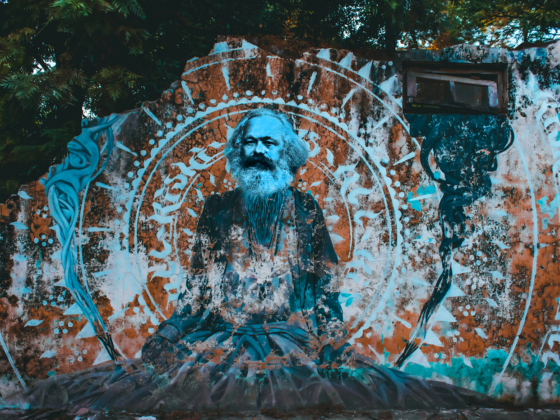
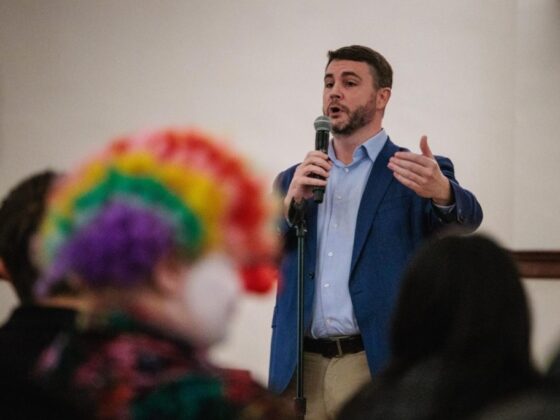


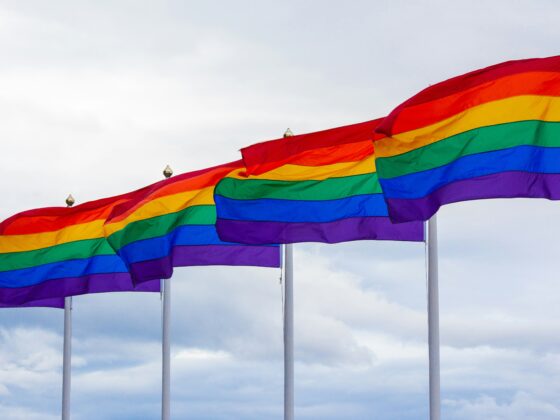
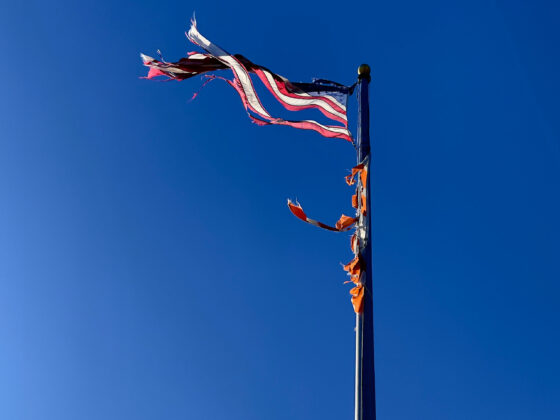
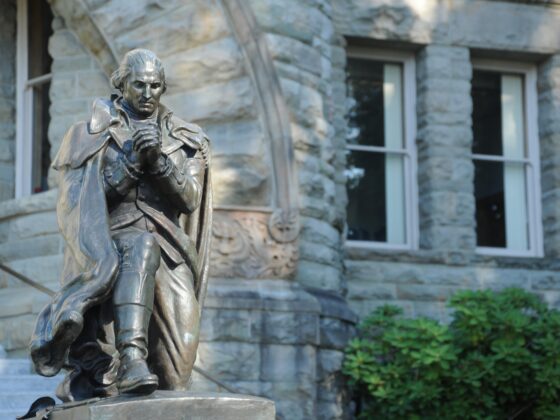
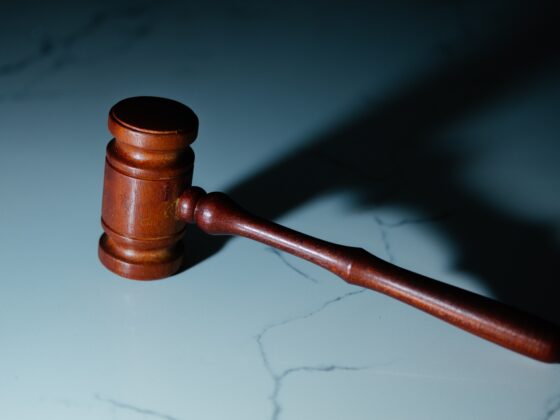
20 comments
What are your criteria for accepting comments? Where is your essay published? New Discourses?
As the significance of artificial intelligence software begins to become apparent in all of this, one of the most serious flaws in wokism is that a computer cannot accept decoupled binaries.
Thus if pressed – every academic would either need to plead 5th, or admit that computers are programmed to understand what a woman is.
And give the like of Daniel Dennett & Roger Penrose et al a hard time if possible, they now believe the human mind is a computer. This factor could prove to be one of the few cats eyes in the headlights style, lines of reason there is. For consider – since a computer categorically refuses to work in a non binary way, & the mind is said to be a computer – why is the human mind expected to ?
This way would actually constituent pressure on the woke means of distribution. There is little doubt that Woke is mainly distributed sociologically via the databases th establishments claim are Ai.
Its true – they are artificial & evil intelligence is significant.
That’s the point. Binaries cannot cope with Humanities or L&S.
A Columbia University sociologist has argued convincingly that blacks, Hispanics, and college students from less advantaged backgrounds are more religious and socially conservative than white and/or more privileged students. Thus these diversity and inclusion movements tend to disproportionately alienate and exclude minorities. Hence, if you want to significantly increase demographic diversity, you must also increase ideological diversity.
https://musaalgharbi.com/2019/04/29/relationship-between-ideological-demographic-diversity/#more-2445540
Knowing how to decipher sign systems, ideological diversity is here to stay. Yes, the poor love the church that promises so much
I am hoping my son will write about his years upon a UC campus once he has graduated from grad school In June. He is a white, straight, republican male and the treatment he has received has been nothing short of bullying and racist. He has been silent against his own inclination but upon our advice. It has been horrendous and our other children will not be attending such places.
“It is disturbing that both white supremacists and many campus anti-racists seem at times to share the belief that rationalism is reserved for whites.”
I have often said that the Liberal vs Conservative spectrum, or Left vs Right, is actually a circle. If Centrists occupy the top of the circle then extremists from both sides meet at the bottom. They occupy the same ideology, just approach it from different directions.
Your logic is flawed. Think it through so more.
“If blacks are channeled as a result of racism into the lowest levels of the class structure, they will not, for example, have the funds to attend college except in rare instances. They will therefore have little prospect of studying any fields that can provide a middle- or upper-middle class income, even if they have or could develop an aptitude for and interest in these fields. In this case a distributional disparity is related to racism, and it would not be stretching matters to describe it as an outcome of systemic racism because there have been institutional mechanisms at work to create this result.”
You very breezily glanced over the most critical component of your argument which was made in the first sentence; “If blacks are channeled *as a result of racism*…” which becomes the basis of your proof for systemic racism. So you’ve made the connection that “if something happens because of racism, then racism is the cause”.
Your statement could easily be rewritten as “Anyone from the lowest levels of the class structure, they will not, for example, have the funds to attend college except in rare instances…” in which case the correlation between race and college attendance is not apparent. But there could be lots to talk about regarding the correlation between socioeconomic status and college attendance, though it may end with a chicken/egg analogy.
Gotta get out of the chicken/egg analogy. Those that believe that the mind is a computer have left out so much of what the mind can do!
I think the request for citation by Merav is a good one. Komi and I might need to revise that sentence. There’s plenty of evidence that there are hundreds of thousands of highly prejudiced people in the U.S., but I cannot find evidence on what proportion of those people could be categorized as “white supremacists” in the accepted meaning of the term.
I agree that a citation would be useful. However, I would go so far as to hope for a historical understanding of the definition of “white supremacist” as well. Volatile terms and labels may have undergone changes to enhance generalization and thus become part of propaganda.
That’s why we need a form of Oxford dictionary and not google!
Steven – When you state “There’s plenty of evidence that there are hundreds of thousands of highly prejudiced people in the U.S.”, are you including people of any race prejudiced against any other race?
It would be an interesting study to look at the magnitude of racial prejudices within a given race. For instance, percent of prejudicial whites compared to percent of prejudicial latinos or prejudicial african americans or prejudicial africans etc.
I wonder if we would see a ‘base’ level of prejudice among all peoples. Making up a number, say 1% of any given race meets the criteria of what we define as prejudice toward another race, making it, to some extent, a ‘human’ condition more than a ‘racial’ condition.
——-
On a tangential note, I was reading a report published by a university that has formed a permanent Equity and Inclusion Committee who’s first order of business was to assess the conditions on campus regarding these matters. They did unofficial research on the matter and found that many of the minority students had at times felt “excluded”, “not measuring up”, “uncomfortable socially”, “oppressed”, “powerless”, “like an outsider”, etc. Many anecdotal quotes were included in the report to support the committee’s findings.
The problem I see with this ‘research’ is that there was no base condition established. They only polled and sought feedback from minorities. My first thought was that I had personally felt most of those things at some phase or another in my 6 years of college life as a white male (which I know…doesn’t count). But campus life puts everyone through the ringer and I suspect feelings of loneliness, exclusion, powerlessness, etc are experienced among students of all stripes. But the internal audit was geared toward a pre-determined narrative (we have racism and just need to find it) so they found anecdotal experiences which they could only conclude were caused by the systemic racism they had already presumed existed.
**I had a funny thought – what if an Equity and Inclusion Committee conducted their audit and reported they had found no verifiable evidence the organization they represented was in need of any changes? They’d be laughed out of their job. It would be like a Security Auditor concluding that their organization had zero possible threats to be concerned about. Both Security Auditor and E&I committee ask “Where” not “If”. But at least the Security Auditor knows they are dealing with hypotheticals while the E&I committee believes only in existing conditions.
It’s a Kafka trap. By asking for evidence you are ‘proving’ that you are part of the problem.
I tend to verify information I read in articles/essays, so thank you for the source citations. There is one missing, however. What is the evidence for the following statement: “The Trump years have made clear that the United States is home to hundreds of thousands, and more likely millions of white supremacists in the accepted meaning of the term. They have proven to be a major threat to democratic institutions, as well as to the well-being of minorities”?
I saw that and thought, he just fell into the same trap of concept creep.
I also found this claim dubious. The “Trump years” have certainly made no such thing clear to me.
From my point of view the Trump years have forced the United States population to come to terms with fact that it is a PLURALISTIC society, racially and ethnically. Glass half full.
Great article but I’d add one (small) correction: It wasn’t just faculty positions. In 2018 I applied for a staff position at two campuses (Davis & Berkeley) and had to submit one.